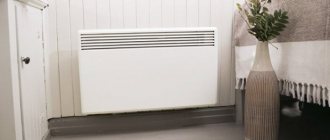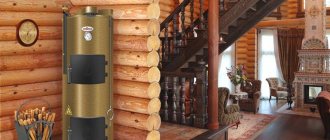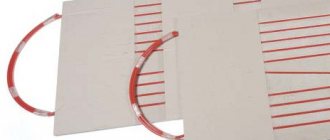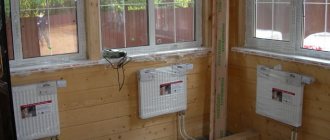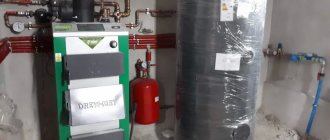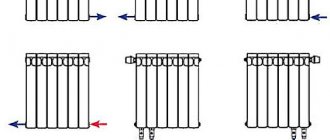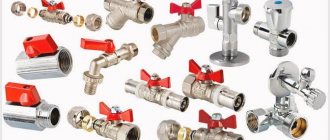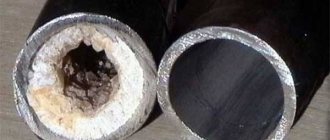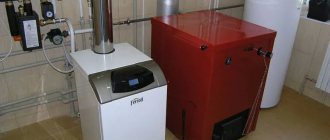If a residential building is located far from the central highway, it can be difficult to ensure the creation of comfortable conditions. When heating with stoves, certain difficulties may arise. It is necessary to have enough fuel available, as well as create conditions for uniform distribution of heat throughout all rooms. In this case, the optimal solution may be electric heating of a private house. It can be implemented using various equipment. It has a number of advantages and disadvantages. Having become familiar with its distinctive features, it will be possible to make decisions about the advisability of using it for heating a specific structure.
Pros and cons of heating your home with electricity
Heating a private home with an electric boiler has many undeniable advantages:
- Ease and simplicity of installation work.
- Installing the system does not require the use of complex and expensive tools. You can install electric heating in your own home yourself. The equipment is not large in size, is installed at minimal cost, and equipment already in use can be easily transported and moved to different rooms. There is no need to install a separate boiler room and chimney.
- Safety.
- When operating electric heating systems, no harmful emissions are generated due to the complete absence of combustion products. Neither materials nor equipment contain any harmful substances.
- Low costs.
- There is no need to prepare and develop project documentation, invite special services, and no permits are required.
- Quiet and reliable operation.
- Properly made electric heating does not require any maintenance by third-party specialists. The equipment is characterized by quiet operation due to the absence of a circulation pump and fan.
- Easy to use.
- There are no quickly wearing elements in the system; there is no need to monitor the fuel level and pressure sensors.
- High efficiency.
- The ability to quickly heat and warm up the house even during the most severe frosts. The system is equipped with special equipment with which the temperature in each room is regulated, which also allows optimizing costs during the heating season.
Flaws:
- Significant energy consumption.
- This is the main disadvantage, since the cost of electricity is quite high. In some areas, this method of heating a home may be completely impractical and unprofitable.
- Dependence on external energy supply.
- If for any reason the electricity is turned off, heating will be impossible.
- Susceptibility to voltage fluctuations in the network.
This is often typical in rural areas. The problem can be solved by purchasing a generator, but this will also increase costs significantly.
Each of the considered types of electric heating has its own advantages and disadvantages, which should definitely be taken into account if you want to arrange a good heating system for your own home. In any case, you should think about insulating a house at the design stage, since the efficiency and economy of heating using electricity largely depends on this.
Inverter radiator
Inverter heating batteries have proven themselves well - they are not afraid of power outages and have greater autonomy, unlike all the devices listed above. These devices have the ability to accumulate electrical energy and consume it in cases of emergency power outage. It is very beneficial to use such devices in regions that have problems with the quality supply of electricity.
Advantages of inverter batteries used for heating country houses:
- silent operation;
- easy starting of the generator during a power outage;
- fire safety.
Disadvantages of devices:
- high price;
- the need to comply with certain installation rules recommended by the manufacturer.
Adviсe
The most economical boiler is the one that is equipped with the best automation and complemented by well-selected thermostats
It is important to remember that all promises from manufacturers and sellers about “lower energy consumption” materials, original designs or low power are nothing more than a marketing trap
If infrared heating is selected, one control unit must be installed for every three heating elements. It is better to heat wooden houses using convectors, where a low level of fire hazard is crucial. There is no point in purchasing components for heated floors without automatic control systems.
In order to efficiently heat a house or apartment with electricity, it is worth taking care of careful insulation of the home and the prevention of all kinds of heat leaks. It is the cracks that are invisible from the outside that devalue even relatively powerful heating devices.
The use of complex automation in the heating system is especially important if no one is in the house during the daytime. Controllers and timers that start heating at a precisely specified time allow us to resolve the “eternal dispute” between saving energy resources and comfort
In a house with electric heating, regardless of the type of heating device, there must be a meter with several tariffs. Thanks to it, the payment for the current consumed at night will be significantly less. If you plan to install a boiler that develops a power of 12 kW or more, you will have to re-equip the internal electrical network and install a three-phase meter. Of course, this type of work is not allowed to be carried out without the approval of the energy supplier and regulatory authorities. The basic principles of piping and connecting radiators are the same as for “water” systems.
It must be remembered that boilers running on electricity cannot heat many batteries at the same time. An infrared heater should have a power of 100 W per 1 m2, and if you need several heating devices, a pyrometer will help you make all the calculations as accurately as possible. This mechanism immediately identifies the warmest areas that need heating. We must not forget that, despite the decent level of safety of infrared films and circuits, they still remain electrical appliances.
The basic rules are:
- a certain distance to easily flammable objects, gas cylinders and anything that can explode;
- laying cables in special channels or on top of non-combustible bases;
- inadmissibility of contact of the fastener with the part that directly provides heating;
- placement of ceiling panels at a height of 250 to 350 cm;
- The maximum power of a home or apartment device is limited to 0.6 kW.
Ceiling installation is much more effective than wall installation. But the location of the panels directly above the sleeping area, above the dining area or above the working part of the office cannot be called comfortable. The best solution would be a slight shift to the side. And in order for several units to work synchronously and accurately, they need to be connected to a single thermostat.
Although electric boilers are more common, there are also several important points in their installation. Before installation, you should check that there is no voltage in the network. It is unacceptable to choose a site located next to a water supply, sink, other sources of water and reservoirs. All electric boilers and equipment connected to them must be thoroughly grounded. Although official permission is not necessary, it is still better to order a professional inspection of the house and inspection of the scheme by specialists.
When calculating thermal power, it is worth taking into account the position of windows and floors, the level of glazing, the number of rooms and the quality of their insulation. Experienced owners and professional installers always supplement the electric boiler with a nearby RCD
Watch a video review of electric heating in the country in this video.
How to make heating cheaper
Even the most modern and economical equipment will waste energy if the house is not insulated. Thermal insulation is required not only for walls, but also for the foundation, plinth, roof, and openings. The thickness of the insulation should be calculated taking into account the climatic zone and all layers that make up the enclosing structure. Entrance doors with a thermal break, double-glazed windows, insulated floors on the ground - all this will save the lion's share of electricity and not heat the street at your own expense.
If you solve the problem in a comprehensive manner, you can achieve very good results. To do this you need:
- Have a power allocated to the house of at least 15 kW. If it is insufficient, it will not be possible to save energy. The equipment will turn on and off frequently, resulting in excessive current consumption.
- Design and install an economical low-temperature heating system. It is necessary to calculate the power of radiators, install thermostatic heads and temperature sensors.
- Use a heat accumulator. At night, it will accumulate thermal energy, and during the day it will compensate for its lack.
In houses that cannot be gasified, the electricity tariff is significantly lower. The state provides social support so that residents can use cheap heating with electricity and satisfy their household needs without much damage to the family budget.
Almost all regions have a tariff program. This means that from 7 am to 11 pm the prices are high, and at night they are 2-4 times lower. To use tariffing, you must install a two-tariff meter. Since the single tariff does not differentiate energy consumption by time, but only displays the total consumption, you will not be able to take advantage of economical electricity.
Installation of wall elements
Installation of wall elements has its own characteristics. Where the boilers are attached, the internal structure of the frame must be reinforced with additional jumpers. When installing a floor-standing combination boiler (gas and solid fuel), you will have to make a special foundation for the boiler. This is due to its heavy weight. To do this, individual piles are screwed in and connected with a powerful grillage. A platform is mounted on top (formwork and cement filling or a finished concrete slab), and a boiler is installed on it.
The boiler will need to be well insulated (in terms of heat loss and fire safety). As you can see, the procedure is quite labor-intensive, which is why most owners of frame houses prefer wall-mounted boilers. Moreover, for them there is no need to pull the chimney through the room, but immediately install a short coaxial chimney in the form of a curved pipe, which goes into the wall and out into the street - immediately above the boiler. In any case, you will have to make a hole in the wall to remove combustion products. Good insulation is required in this area. To install a water heated floor, it is better to use non-flooded models using special materials (heat-insulating mats, lathing).
Installation of electric heating is carried out according to the usual rules for electrical installation work in wooden houses. All wiring must be calculated based on the total required power with a reserve for other needs of residents. If the electric boiler is heavy, then the wall is reinforced, as is the case with a gas boiler. Well, installing an electric floor should not cause any difficulties. Installation instructions are usually included in the kit.
As a rule, its installation requires heat-insulating materials and fasteners. They can be combined: heat-insulating or special laying plates with shaped fasteners or tracks for cable laying. In this regard, film flooring is more convenient - it is easier to install. Can be easily installed under parquet or linoleum
It is important to insulate the floor well, otherwise the entire effect of the warm floor will come to naught due to the pile foundation of the house
First, the main elements are installed (boilers, circuit pipes, electrical cable or film). Then they are connected to each other by sensors and control units - if available. Then the system is checked: the water system is tested under pressure, and the electrical system is tested by test activation. If everything is done correctly and the systems are working, then the final cosmetic and finishing work is done.
With the right selection, design and installation, your home will become truly residential. Now you can enjoy the warmth even on winter evenings.
Comments:
Evgen
A good review, but a quartz emitter is actually no different from a conventional convector, so there is no need to overpay for a beautiful name, but about electric heating furnaces - you’re right, it’s better not to use them as a heating device
Semen
Evgen, the electric stove should be used for fast local heating. In the garage, for example. I consider convectors on wheels to be the best option for a summer residence. They are mobile and warm the place where the person is. Maximum energy savings. But it’s inconvenient, I agree
Leave a comment Cancel reply
Related Posts
We heat a private house using electric heating
Heating the roof will help avoid problems with melting snow.
An electric convector on the wall will quickly warm up the room
Selecting a heating cable for heating a water pipe
Requirements for heating systems
When creating a heating system in a country house, to ensure its maximum efficiency, you should adhere to a number of recommendations and rules.
In order to maintain the continuity of coolant movement, the main riser should be properly insulated.
This is due to the fact that liquid movement is possible if the system is filled with water and there is a temperature difference.
If necessary, you can increase the speed of the coolant. This effect can be achieved by increasing the height of the pipeline and radiators. When creating such circulation conditions, this distance should not be less than three meters. To achieve this result in the absence of a basement, the boiler is placed in the basement at the height of the heating devices on the ground floor. In this case, it is recommended to move the center of the boiler down 150-200 mm relative to the axis of the radiators. For this purpose, a pit is constructed.
Most country heating systems operate on the principle of gravitational fluid circulation. The length of the pipeline structure does not exceed 15-30 m. As the length of the pipes increases, friction within the system does not allow heating to be carried out efficiently. To reduce the influence of this factor, it is advisable to use pipes of larger diameter and provide wide passage holes in the design of heating devices.
Heating system
How to choose the boiler power and the volume of the heat accumulator
Typically, a buffer tank is installed together with a solid fuel boiler. This reduces the load on the boiler and promotes more uniform heating of the rooms. In addition, residents of the house do not need to constantly monitor the availability of fuel and work around the clock as stokers.
The heat accumulator is effective not only in heating systems with a solid fuel boiler, but also with any other ones - diesel, pellet and electric. By correctly calculating its volume, you can switch completely to cheap nighttime energy.
Two criteria for selecting a heat accumulator are boiler power and heated area. Typically, the boiler power is selected based on the area of the house. For every 10 m², the boiler must generate 1 kW of thermal power with a margin of 20%, that is, to heat a house of 100 sq.m, you will need equipment with a capacity of 12 kW, for 200 sq.m - 24 kW.
The tank volume is selected at the rate of 35-50 liters per 1 kW of boiler power. This means that in the first case the heat accumulator should have a volume of 420-600 liters, in the second - 840-1200 liters. With average insulation of the house, this is quite enough to warm the coolant with night electricity and use this energy during the day for heating.
Reducing the volume is undesirable; it will not give the expected economic effect. Increasing, on the contrary, reduces energy consumption. But here you need to take into account the weight of the water tank, the possibility of installing it indoors and, of course, the cost.
The price of a heat accumulator depends on the volume and material from which it is made. A black steel tank can be bought for 45-110 thousand rubles, a stainless steel tank for 65-210 thousand rubles. Installation and wiring will cost about 25-30 thousand. You can make a heat accumulator with your own hands, it will be much cheaper.
When changing the type of fuel, the tank can be connected to another boiler - classic solid fuel, diesel or pellet. There is no need to change the entire heating system. In order to have hot water supply in addition to heating, combined buffer tanks are produced.
Classification of air heating systems according to the method of heating the air.
According to the method of heating the air, air heating systems are:
1. Direct heating air heating systems
In a direct heating air heating system, the air is heated directly by the heater.
The heater can be electric (once again let’s remember our fan heater), it can be gas, like in Goodman, Lennox, Nordyne air heating stoves, or it can also work on another type of fuel. We will return to fuel types later. Those. In an air heating system, air is the primary coolant. 2. Indirect heating air heating systems
In an indirect heating air heating system, air is heated by passing through a heat exchanger from another heat carrier, usually heated water. The heater in this case is separated from the fan and heats the water, which then gives off its heat to the air. Indirect heating air heating systems are more versatile, because any hot water heating boiler can be used to heat water, using any type of fuel - gas, diesel, pellets, etc. In addition, the same boiler can be used for hot water supply and heated floors. Those. no need to buy one boiler for heating, another for hot water, etc. A single boiler, correctly selected in terms of power, is sufficient. Solar collectors or heat pumps can also be used for heating. Thus, in an indirect heating air heating system, the primary coolant is water. And air is a secondary coolant. Indirect air heating systems are generally more efficient than direct heating systems.
In accordance with this classification, the Antares Comfort air heating system is universal - you can install both an electric heater in it (making it a direct heating air heating system) and a water heat exchanger, turning it into an indirect heating air heating system. Or install both, resulting in a universal system. No foreign air heating system has such flexibility.
No. 7. Infrared heaters
Infrared heaters are 20-35% more economical than conventional electric boilers , and experts are confident that such devices will soon become on par with traditional heating systems. So far they are losing to their competitors in terms of popularity, but the demand for them is growing at an immediate pace. The principle of operation is to convert electricity into infrared rays, which heat not the air, but objects, like the sun. Heated objects release heat to the environment, and the room temperature rises. Objects are heated only in the area where the heater rays are directed.
Infrared heaters are presented in two modifications:
- devices on legs;
- flat panels that are attached to walls or even ceilings.
It will not be possible to quickly heat a room in this way, but due to their efficiency, environmental friendliness and operating features, infrared heaters can be used as an independent source of heat in a country house , unless, of course, they live there permanently. Remember that such devices are often placed in the open areas of cafes, so for autumn and spring outdoor gatherings these heaters will be just right - you will get a warm and cozy relaxation area.
The power of such devices ranges from 0.25 to 3-4 kW. Infrared heaters are fireproof and durable, can last up to 25 years .
Heating the cottage with gas
To properly install autonomous heating in your dacha, you need to study the recommendations of specialists. If the property is connected to a central gas main, the system must be installed by a specialist. The boilers have a high level of heat transfer; the equipment can be equipped with batteries that accumulate all unspent heat.
The owner of a property needs to think in the summer about how to economically heat his dacha. Heating equipment will cost more than a conventional stove. You need to draw up a detailed plan and invite specialists. The main danger is that improper operation of a gas installation can lead to an explosion.
The video provides interesting information on how to install heating in a house without gas:
Reasons for using electricity
The cheapest option for heating a home is equipment that runs on natural gas. However, not all settlements in our country can boast of having gas pipelines. In second place in terms of efficiency after gas is solid fuel - firewood, pellets and coal. This option is about 3-5 times cheaper than electricity, which is why it may seem that electric boilers have no chance.
However, it should be taken into account that in addition to the cost of energy, when choosing the type of heating, attention is also paid to its autonomy. This term refers to the ability of equipment to function properly without constant human supervision.
According to this criterion, solid fuel lags significantly behind electrical energy:
- Traditional solid fuel boilers require constant monitoring, because... Fuel loading is carried out every 3-6 hours.
- The use of pyrolysis units allows you to slightly increase the interval between loads to 10-12 hours.
- Pellet boilers with automated fuel supply from the bunker are considered the most unpretentious in this regard: they are capable of autonomously maintaining combustion in the firebox for almost a week.
- Any electric heating of a home operates autonomously, without requiring care and maintenance for a long time.
It turns out that of all the solid fuel boilers, only the pellet boiler can, with a stretch, be called automatic. Such equipment is capable of maintaining heat in the house while the owners are away for several days. However, the variability of pellet supply in different regions should be taken into account. Also, the cost of this fuel in some cases calls into question its efficiency. It is very inconvenient to install such heating equipment, which does not allow you to leave the house even for a few days.
General information
To prepare an estimate, the following documents are required:
- An exact plan of the premises where the work will be carried out. The wiring diagram must be marked on the plan.
- Customer's project with potential arrangement of electrical equipment. If it is impossible to place certain devices, the contractor will advise the customer on this topic.
- Technical conditions. This document is ordered from your electricity supplier.
- If necessary, permission to connect the circuit to the electrical network.
- Act on the balance sheet of electrical networks. Mandatory for businesses.
Important! The customer himself can provide the materials. In this case, the estimate reflects only the costs of work
In addition to materials, tools and the price of the work itself, the estimate includes:
- Increasing coefficients for certain types of work. Indicated in the Decree of the State Construction Committee dated 04/05/2004 No. 15/1. This may include work at heights, at high temperatures, in operating buildings.
- Overheads. Regulated by MDS 81-33.2004 and MDS 81-25.2001.
- VAT compensation - under a simplified taxation system. Regulated by Letter of the State Construction Committee No. NZ-6292/10 dated October 6, 2003 (For the simplified tax system, leave 20% VAT).
- Estimated profit. You can learn about it from the Letter of the State Construction Committee dated November 18, 2004 No. AP5536/06.
- Transport costs (not always).
- Unexpected expenses.
Important! If amendments are made to the estimate at the initiative of one of the parties, the other party must be notified of this. All changes and adjustments must be documented to avoid disputes in the future.
Reviews: how much money you can save
As for specific numbers, it is difficult to provide accurate information, since the cost of electricity varies in different regions and much depends on additional factors. Let's look at user recommendations that will reduce energy consumption to a minimum:
- Select an induction boiler that matches the power of the heated area. It is not worth taking one that is too weak, or one that is too productive.
- Use all possible automatic temperature control systems to ensure that the equipment does not work in vain. Install thermal heads on radiators to reduce the temperature when necessary.
- For initial heating, use an additional boiler, for example, with wood or diesel fuel. It is not difficult to heat it once, but a lot of energy will be saved. And to maintain heat, you can already turn on the electric boiler, this scheme will save money.
If you use modern, economical equipment, install automatic control systems and an additional boiler for primary heating, you can reduce heating costs by one and a half to two times.
Heating your home with electricity is much easier and safer than using natural gas. It should also be taken into account that the atmosphere is not polluted, a chimney is not needed, which reduces the cost of installation work. And if you use modern technical solutions, you can reduce energy consumption to a minimum. It is advisable to watch a video with recommendations from experts to understand the issue even better.
No. 3. Heating a country house with an electric boiler
The main part of an electric boiler is a heat exchanger, a tank with heating elements. They heat the coolant (water, antifreeze, oil), which circulates through a system consisting of pipes and heating radiators - everything, as is the case with a gas or liquid fuel boiler. In addition, the system often includes an expansion tank, a circulation pump and a safety valve. Induction and electrode boilers work somewhat differently.
The advantages of this heating method are obvious: no smoke and no need to install a chimney, quiet operation, safety, high efficiency (up to 99%), ease of operation and temperature control. Due to the high cost of electricity, such boilers are installed mainly when a country house is not used for permanent residence. In addition, do not forget about the need for good electrical wiring.
The following types of electric boilers can be used in the heating system:
- Heating element boilers are the simplest and most popular devices. The principle of their operation can be compared to a conventional electric kettle. Heating elements, of which there are usually 3-4 in a boiler, heat the coolant (water) in flow mode. Depending on the required temperature, the heating elements are turned on together, one at a time or in groups. Heated water circulates through the system, and for better pressure and circulation, circulation pumps are usually used. The power of such boilers ranges from 3 to 50 kW; there are models operating from a single- and three-phase network. Advantages of heating element boilers: compactness, low price, ease of installation. A significant drawback is the formation of scale on heating elements, which leads to increased energy consumption and gradual failure;
- Electrode boilers operate without heating elements. Their main part is electrodes. When current passes from one electrode to another through a liquid, the latter heats up under the influence of its own resistance. Antifreeze is used as a liquid. The power of electrode boilers is 5-25 kW. Such devices do not have the main drawback of heating element boilers - scale formation; they are compact, safe in case of water leakage and inexpensive. But they require mandatory water treatment, water must circulate strictly at a certain speed, and the electrodes gradually wear out and therefore require periodic replacement;
- Induction boilers also do not have heating elements, and heating of the electrical medium (water, oil, antifreeze) is carried out due to electromagnetic induction. These are the most economical boilers to operate, there is almost no scale formation in them, durability is excellent, but the purchase costs will be considerable, and the dimensions of such boilers are decent.
In addition, all boilers are divided into single-phase (consume 220 V voltage) and three-phase (380 V): the first are suitable for small houses and dachas that are visited from time to time, the second - for large dachas. Boilers are also divided into wall-mounted and floor-mounted, single-circuit and double-circuit (these also make it possible to organize hot water supply to the dacha).
As for the boiler manufacturer, to ensure reliability and durability it is not at all necessary to give preference to imported equipment - domestic products are better adapted to our operating conditions. By the way, craftsmen use a regular boiler in the heating system together with an electric boiler. It will cost even less, but there will be a few more problems.
Ceramic heating panels
More recently, electric heating systems for country houses began to be supplemented with ceramic panels. These devices demonstrated excellent consumer characteristics. They have an aesthetic design, a neat body and require simple installation. However, the main advantages of ceramic heating panels lie not in the competent design of the housing, but in the operating features. These devices are in many ways superior to convectors and oil heaters.
They can demonstrate the following capabilities:
- quick heating of the room;
- rational consumption of energy resources;
- increased fire safety;
- durability;
- reliability;
- fully automated work process.
The only nuance that owners of country houses should study before deciding to purchase a ceramic panel is the cost of the appliances. At the moment, the price of panels on the market is quite high, and given the fact that several devices are required to fully heat a dacha, their purchase will cost a hefty sum.
Filling without heating
We looked at the most common options for heating concrete, however, winter concreting can be done without heating. This method is good because it does not require the supply of electricity and the installation of heating systems, which speeds up the construction process.
The principle of this technology is to use special additives that reduce the freezing point of water, as well as speed up the hardening process of concrete so that the solution does not have time to freeze. At the same time, the strength of the material does not suffer at all.
Pouring concrete in winter without warming up - building a foundation
Among other advantages of using this technology is the prevention of efflorescence.
An example of such compositions is the Morozostop additive. To ensure frost resistance of the mixture with its help, you just need to add the required amount of the substance, which is indicated on the packaging. The price of such an additive is quite affordable, so the cost of concrete practically does not increase.
These are, perhaps, all the main nuances that you need to know about warming up concrete and pouring it in the winter if you decide to do construction at sub-zero temperatures.
Air conditioners
An air conditioner is often perceived as a device for cooling air. It is important to understand that any such device is a type of heat pump operating on an air-to-air cycle. If you start it for heating, it demonstrates no less efficiency than similar direct heating equipment. The ratio of thermal power to consumed energy for modern inverter air conditioners is in the range of 3.6 - 5.
Heating functions can be effectively performed at a lower operating temperature of -25 degrees. In regions located in central Russia, air conditioners often serve as an auxiliary heat source, regardless of the time of year. Installation of equipment can be carried out either independently or by numerous companies. The most convenient in this regard are considered to be window models, the installation location of which is often an open sash.
Heating system options
So, let's look at existing equipment that will make electric heating in the house economical and cheap.
Using the boiler
Installing an electric boiler, which will heat water in the home heating system, warming up the room, is the first, least effective option. Of course, on the Internet you can see a bunch of information that talks about economical boilers that can reduce consumption by up to 80%, but all this is nonsense. The only option to reduce costs is to install thermostats and various automation systems, which will turn on only when the temperature in the room drops, as well as at certain times of the day. All other talk about new product designs or reduced power is just a publicity stunt. If you buy a small-power boiler, it will take more time to heat the water for heating the house, so that’s what it will do.
Using IR Panels
Installing infrared heaters is a more reasonable solution and, most likely, the most profitable. The fact is that these products do not heat the air in the room, but certain objects (floor, walls, closet), from which heat is subsequently transferred. If in the previous version the hot air will rise to the ceiling and immediately cool down, then in this case the heat is directed to the floor, which is more reasonable (people do not walk on the ceiling).
This diagram shows the efficiency of an economical heating system for a private home:
You see everything for yourself, so there is nothing more to prove. It should only be noted that IR devices can work more efficiently if you add thermostats to them. One regulator is enough to control three heaters in an economical heating system for a private home. We talked about how to connect a thermostat to an infrared heater in a separate article.
Using convectors
Many manufacturers convince us that an electric convector effectively heats a room and at the same time consumes a small amount of electricity. The issue is of course controversial, because, in fact, the principle of operation of the products is similar to the option with radiators (the air rises upward). The advantage of convectors is that their installation and connection are not difficult. In addition, heating of the heating element takes about one minute, which is undoubtedly faster than in the case of water radiators.
Other advantages of electric convectors include:
- low cost (from 2 to 10 thousand rubles);
- fire safety (which is especially important when installing heating in a wooden house);
- you can gradually increase the heating system (one convector for a room is not enough, buy another one and connect it to the network without any problems);
- attractive appearance;
- trouble-free operation during power surges (also important in the private sector);
- compact sizes.
Separately, I would like to recommend that you explore a heating option such as electric heated floors. You can find out a review of this heating system by watching the video:
Application of heated floors
We analyzed reviews from customers who used this option and saw that most people were satisfied with the purchase. The main thing is to additionally install a temperature regulator in order to make economical electric heating in the house with your own hands.
Oil batteries
Electric oil batteries resemble conventional water radiators in appearance, but heating of the coolant, in this case the oil located in the metal body of the device, is carried out using electrical energy. Various models of oil heaters are capable of efficiently heating the air in a room with an area of 10 to 25 square meters. They are often floor-mounted and equipped with a number of auxiliary options, such as an operation timer and thermostat.
Features of oil heaters:
- affordable price;
- rather bulky body;
- poor sensitivity of the device due to slow heating of the oil;
- high electricity consumption.
Metal stoves
The efficiency of a metal furnace depends on the density of the fuel. There should be no free space between solid elements. Firewood inside a metal stove must be placed in a cage. The denser the filling, the longer it will burn, providing heat to the entire room. When properly stacked with firewood, a metal stove retains heat for 24 hours.
As wood smolders, it releases heat energy, and the stove has a special compartment for air supply. The characteristics of the metal affect heat transfer and thermal conductivity. Despite the weak accumulation of heat, the thermal conductivity of the metal is high. This stove produces heat efficiently, is compact, and can be installed anywhere. Cast iron stoves are reliable and last longer than products made from other materials.
Advice!
You can buy a stove of an unusual shape to decorate your country house setting.
Metal stoves are not installed in large houses, because they will not provide a comfortable temperature in a building with a large area. Their safety level is lower than that of stone or brick products, but they are quite suitable for a small dacha. You need to follow safety precautions and stack firewood correctly.
Heat pumps
The main purpose of a heat pump is to pump thermal energy. The most famous type of it is the ordinary refrigerator. Inside it, thermal energy is taken from the refrigeration chamber, with its subsequent release into the surrounding space.
The complete operating cycle of a heat pump includes the following stages:
- Compression of freon gas by a compressor. Due to the increase in pressure, it turns into a liquid aggregate state. This is accompanied by an increase in temperature by several tens of degrees.
- Passing hot refrigerant through the pump's internal heat exchanger. In this case, excess heat is transferred to the coolant or air in the room.
- The return of cooled freon to a gaseous state after it passes through the expansion valve. We are talking about a section of the contour with a sharply increasing diameter. After turning into gas, a sharp decrease in the temperature of freon is observed.
- Circulation of refrigerant through an external heat exchanger with its subsequent heating. This is achieved by taking heat from the external environment: its temperature is an order of magnitude lower than the air in the heated room, but higher than that of the refrigerant.
- Compression inside the compressor and exit to the next cycle.
This achieves the following advantages:
- The temperature outside, which acts as a heat donor, is often an order of magnitude lower than the air temperature in the home.
- In this scheme, only the compressor consumes electricity. At the same time, the level of its electrical power is often an order of magnitude lower than the thermal power of the pump. This refers to the volume of thermal energy that is pumped by the pump into the home per unit of time.
With the help of the most efficient heat pumps, it is possible to obtain up to 7 kW/hour of heat energy for every kilowatt/hour of electricity consumed. To install such pumping equipment, it is recommended to invite a dealer representative: this will allow you to get a good warranty on the equipment. Water heating operating in combination with such a device must be low-temperature (operating temperature - no more than + 55 degrees).
This will make it possible to achieve the highest possible efficiency of the heat pump. In this case, the temperature difference between its heat exchangers will be the smallest. Heat pumps with an internal water circuit are usually combined with water heated floors or conventional batteries with an increased number of sections.
Diesel fuel
This case is appropriate if the owner of the dacha no longer has any energy resources at his disposal. This really happens, diesel heating comes to the rescue when there is no gas, the limit on electricity consumption is too small, and transporting firewood is too far or expensive. The cost of the equipment is comparable to gas, as is the efficiency (92%), only connection permits are not required. This is where the positive aspects end, the reason is the price of diesel fuel, the operation of a diesel boiler cannot be called cheap.
To heat a dacha with diesel fuel, in addition to the boiler, you still need the same water heating system and radiators filled with antifreeze. The water heating function is also available if you purchase a dual-circuit heat generator. A warning is appropriate here: it is better to take the unit with a minimum of electronics, which can fail at subzero temperatures.
For those who like to do the heating installation themselves, there is an alternative: a homemade boiler using waste oil. You can make it yourself, spending a minimum of money. The game is worth the candle, provided that such fuel is available to you.
Alternative sources of electricity
If a country house does not require too much energy, it can be obtained from alternative sources. These include solar collectors: these are systems that allow you to convert solar energy into thermal energy. The collector collects solar heat and transfers it to a coolant, which is water or antifreeze.
It heats the radiators; in addition, you can organize the heating of water in the boiler to provide hot water supply. This system works in full force in regions with a warm climate and a lot of sunny days.
Organizing a reliable and inexpensive heat supply for a country house is not easy, but all the work will pay off in the future with the opportunity to relax in the fresh air in comfort. Although electric heating is one of the most expensive types of heating, it is possible to design a very effective and inexpensive system that will meet all requirements.
Modern radiators and local heating devices will solve the problem at relatively low cost.
Tatiana Polyakova
Author of publications on 1Drevo.ru with the topics: Wooden Euro-windows | Sealing cracks in a log house | Calculation of house construction | Choosing a roof | Two-story houses | Houses made of cylinders | Heating Plan | Electric heating | Frame verandas | House made of timber 7 by 9 | House lining with bricks | Decorating the house outside | Facade insulation and others.
Collections of publications on topics:
Electricity in a wooden house Electricity in a house
Was this publication useful to you?
Bookmark it on social networks!
Total score: 5Votes: 4
Stoves-fireplaces for heating houses with wood for permanent residence
Electric heating of apartments in a residential apartment building
We recommend! — Encyclopedia Wooden Houses — NEW
You can find out detailed and expanded information on the topic of the article from the book “Wooden Houses,” which reflects all stages of building a house, from laying the foundation to installing the roof. Book price = 77 rubles.
You may also be interested in other BOOKS on building houses from wood with your own hands.
We recommend other posts on this topic:
How to fold a stove with a water heating boiler
Alternative home heating: heating a house without gas and an electric boiler
Using electric convectors to heat a house
Heating a private house with electricity - saving issues
Pellet boilers for heating a private home - advantages
Long-burning double-circuit solid fuel boilers
Features of choosing pipe material
Until recently, metal was considered the traditional material for creating a heating system pipeline. However, welded steel structures are susceptible to corrosion, so they are replaced with galvanized or stainless steel pipes. Copper pipes, which are capable of operating under significant pressure drops, are considered to be the most reliable. However, all these materials have one significant drawback: significant cost.
Modern metal-plastic pipes are an excellent analogue to metal products. The material does not rust, has sufficient strength and is easy to install. Damage to such pipes is possible only in the event of significant temperature changes.
Fan heaters
If the country house has a small area, then an inexpensive fan heater can handle its heating. Among the heating equipment listed in the review, this device has the most compact body and affordable price. However, the use of the device has a number of features. It is worth understanding that the device dries out the air and does not contribute to the creation of a healthy microclimate; it requires constant monitoring, since it is a fire hazard and operates with a characteristic monotonous sound.
Each country house has its own distinctive features, so the choice of the type of electric heating must be made individually. The owner of the house can familiarize himself with the common types of electric heaters and buy the optimal device, which will become the basis of the heating system of the country house.
Pros and cons of heating with electric boilers
The advantages of electric boilers for heating are as follows:
- environmental safety – you can safely be nearby when the heater is operating. After all, such a device does not emit smoke or soot. It does not pollute the surrounding air in any way;
- quiet operation;
- high efficiency – up to 99%;
- work autonomy – can work safely without human intervention;
- no need to install a chimney, lay a fuel line, etc. works;
- Heating a country house with electricity does not require maintenance. This allows you to save a certain amount of money.
Disadvantages, there is only one:
This is the high cost of electricity. For this reason, such heating systems are much less popular than gas ones. Electric boilers are often used as additional heaters. But if we are talking about a dacha that is not used for permanent residence, then such a heat source can be taken as the main one.
Electric convector
This device does not have a number of disadvantages attributed to oil analogues, so electric heating of a house outside the city using a convector can be a reasonable choice. The convector uses a high-resistance metal spiral hidden under an attractive compact body to heat the air. When the lower layers of air are heated, the natural principle of convection of air masses comes into play and uniform heating of the entire country house is achieved.
Convector specifications:
- wall or floor format devices;
- neat small body;
- aesthetic appearance;
- quite high cost;
- availability of additional options;
- rational energy consumption.
